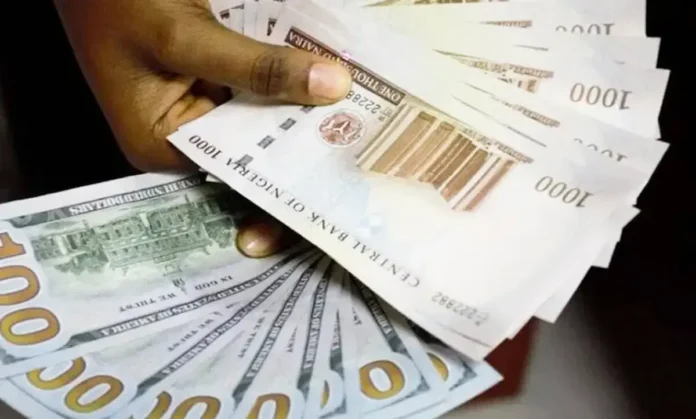The Nigerian currency showed a slight recovery in the unofficial market.
The naira’s value marginally rose from N1,500 to N1,495/$ at the black market in the early hours of Wednesday’s trading session.
The local currency also appreciated to N1,464/$ in the Nigerian Foreign Exchange Market (NFEM).
CBN data showed further appreciation from N1,464.5/$ to N1,464/$ on Monday.
The Central Bank of Nigeria’s interventions, shifting dollar liquidity, and import demands remain the main causes of the naira’s ongoing volatility in the parallel (black) market against the US dollar (USD).
The black-market rate indicated short-term stabilisation amidst wider economic pressures, reflecting a slight appreciation of the naira relative to recent highs earlier in the month.
The parallel market rate is still higher than the official rate, however, indicating ongoing supply-demand disparities.
CardinalStone Research revealed that it expects the decline in inflation to strengthen the value of the naira. The top-tier Nigerian investment bank emphasized the inflation effect and said the currency would benefit from the continuous decline in inflationary trends.
The investment bank disclosed that the trend is anticipated to increase the value of the naira when paired with a persistent current account surplus and a steady rise in external reserves. “We predict that FX will end the year between N1,400/$ and N1,450/$.”
The U.S. Dollar Index (DXY), which measures the dollar’s strength against a basket of six other currencies, traded lower on Wednesday morning in Europe, hovering around 98.90.
The DXY declined as the U.S. federal government shutdown continued after three days of gains. A House-passed bill to fund the government and end the shutdown was not advanced by the Senate on Monday for the eleventh time, bringing the U.S. government shutdown into its 22nd day. The majority of the 50–43 vote went along party lines.
Investors’ trust in U.S. economic governance may be damaged if Congress is unable to enact funding legislation, and the dollar may weaken relative to its competitors. Furthermore, crucial economic data from the Census Bureau and the Bureau of Labor Statistics is not being released, making it more difficult for the Federal Reserve to make decisions.
The odds of a 25-basis-point (bps) cut to interest rates at the central bank’s meeting on October 29 are now priced into Fed funds futures at almost 98.9 per cent, down from 99.4 per cent yesterday. Positive developments regarding U.S.–China relations, however, may help reduce the DXY’s losses.
U.S. President Donald Trump said a “good deal” on trade could come from his next meeting with Chinese President Xi Jinping. Trump acknowledged, though, that the eagerly awaited negotiations might not take place. U.S. Treasury Secretary Scott Bessent will meet with his Chinese counterparts to discuss defusing trade tensions.

